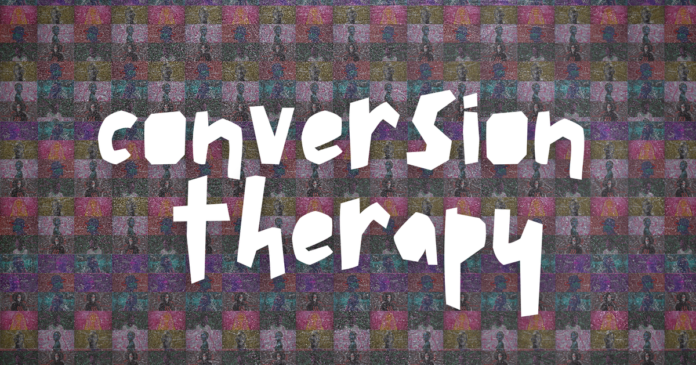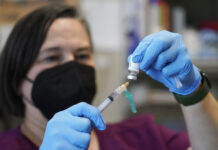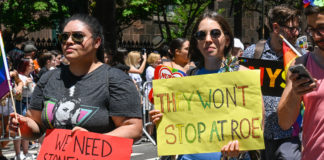
Human rights organisations are calling for action against ‘conversion therapy’ practices, which claim to ‘change’ a person’s sexual orientation, gender identity or gender expression. Brazil, Ecuador, Germany and Malta have banned these practices, which range from ‘talk therapy’ to physical ‘treatments’. Several US states have done the same, while the UK recently pledged to ban ‘conversion therapy’.
International health and human rights experts have condemned these treatments as “harmful” and “ineffective”. But they remain common in many places globally. A new, six-month investigation by openDemocracy can reveal that health centres in Uganda, Kenya and Tanzania – including some funded by foreign aid money – have offered or referred undercover reporters to providers of such anti-gay ‘therapy’.
If you haven’t heard of ‘conversion therapy’ before, here’s what you need to know.
What is conversion therapy?
The phrase ‘conversion therapy’ – sometimes also called ‘reparative therapy’ or ‘gay cure’ – is used to describe a range of practices to change, suppress or divert a person’s sexual orientation or gender identity. Medical experts say the basic concept is meaningless: LGBTIQ identities are not diseases, and cannot be ‘changed’ via any psychological or physical ‘therapy’.
Petition: Make sure you’re not funding anti-gay ‘conversion therapy’
After a six-month openDemocracy investigation, major aid donors and NGOs have said they will investigate anti-LGBT ‘conversion therapy’ at health facilities run by groups they fund.
But unlike the other aid donors, US aid agency PEPFAR has not responded at all.
Please sign this petition to show that it must take action now.
The American Academy of Child and Adolescent Psychiatry says there is “no evidence to support the application of any ‘therapeutic intervention’ operating under the premise that a specific sexual orientation, gender identity, and/or gender expression is pathological”, and ‘conversion therapies’ “lack scientific credibility and clinical utility”.
Is it always physically violent?
No. You might have heard about the use of electric shocks, but ‘conversion therapy’ practices vary widely. They range from ‘talk therapy’, involving counselling, psychotherapy and faith-based interventions such as prayer, to physical ‘aversion therapy’, where the person is simultaneously subjected to a distressing sensation and a stimulus they associate with their sexuality or gender identity. Torture is also used, including so-called corrective rape.
Is it new?
While homosexuality has been stigmatised over time in many societies, Western scientists began to see it as a medical ‘disorder’ that could be ‘reversed’ in the late 19th century. Since then, LGBTIQ people have been subjected to many experiments. In the 1940s, homosexuality and ‘gender incongruence’ were classified as mental illnesses by Western medical associations, which spurred more efforts to find ‘cures’.
The rise of the gay rights movement in the 1960s and ’70s challenged these notions and practices, and the American Psychiatric Association (APA) removed homosexuality from its lists of mental illnesses in 1973. According to a 2020 report by the International Lesbian, Gay, Bisexual, Trans and Intersex Association (ILGA), more than 60 medical associations globally have condemned ‘conversion therapy’.
Does it work?
No. Numerous medical groups, including the APA, have questioned the efficacy and evidence for such ‘treatments’. The APA says that attempts to change an individual’s sexual orientation “may occasionally result in temporary behavioural changes for some […] for limited periods of time, but that such changes are often accompanied by depression, anxiety, and other symptoms”. For others, no changes happen.
Who provides ‘conversion therapy’?
In some countries, public and private medical establishments still provide ‘conversion therapy’ – as evidenced by openDemocacy’s investigation. In others, religious organisations have largely taken over this role, offering ‘therapy’ that usually involves prayer – often in publicly humiliating ways – as well as ‘counselling’.
Who undergoes ‘conversion therapy’?
Lesbian, gay, bisexual, transgender, intersex and queer (LGBTIQ) people undergo ‘conversion therapy’ practices in an attempt to modify, suppress or change their sexual orientation or gender identity to cis gender heterosexuality.
Are people forced to undergo this?
LGBTIQ people are often encouraged or pressured to undergo ‘conversion therapy’ by family members. We interviewed, in collaboration with local researchers, more than 50 survivors of these ‘treatments’ in Uganda, Kenya and Tanzania. Some said that their families threatened their safety, threatened to denounce them publicly or to stop paying their school fees if they did not agree to having this ‘therapy’.
Some LGBTIQ people choose to undergo ‘conversion therapy’ themselves, which is a “manifestation of the scourge of both societal and internalised homophobia and transphobia”, according to the human rights group OutRight Action International.
What are the consequences of ‘conversion therapy’?
Practices to change one’s gender and sexuality are “inherently degrading and discriminatory” said Kaajal Ramjathan-Keogh, Africa director at the human rights NGO the International Commission of Jurists.
Research has shown that these practices have lasting psychological effects. A 2018 US study found that young LGBTIQ people who reported undergoing ‘conversion therapy’ were “more than twice as likely to report having attempted suicide”.
Do any organisations support survivors of ‘conversion therapy’?
LGBTIQ people in East Africa who have undergone ‘conversion therapy’ and are seeking support can contact The Taala Foundation (Uganda), The Gay and Lesbian Coalition of Kenya (GALCK) and LGBT Voice (Tanzania).








